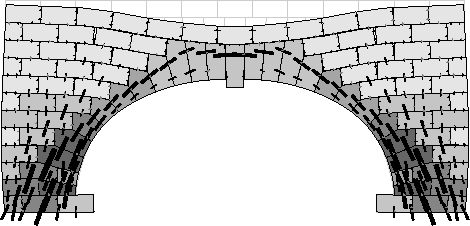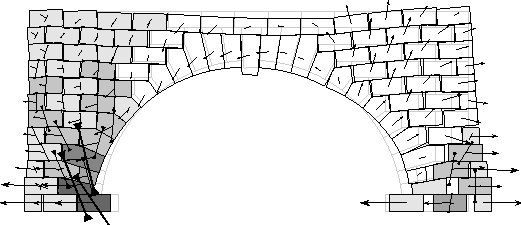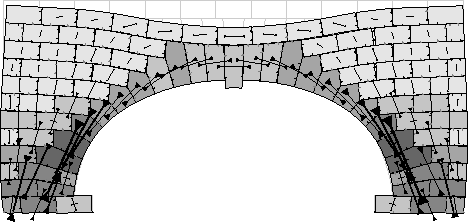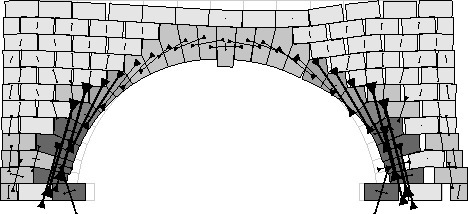V. Acary, PhD thesis, University Aix-Marseille II, 2001
 |
 |
| Equilibrium under gravity load - Reactions (magnification= 30000) | Velocity and stresses during shear wave excitation (magnification= 200)] |
 |
 |
| Equilibrium under gravity load - Stresses (magnification= 30000) | Stresses at equilibrium after shear wave damage (magnification= 200)] |